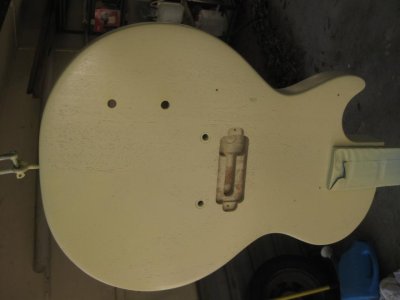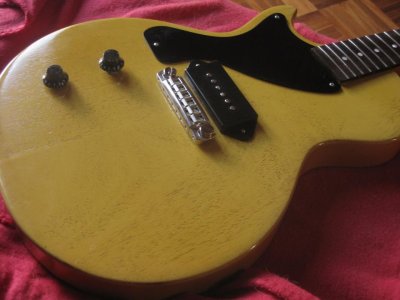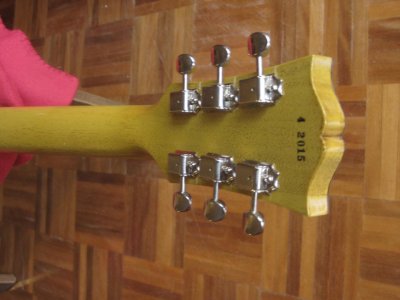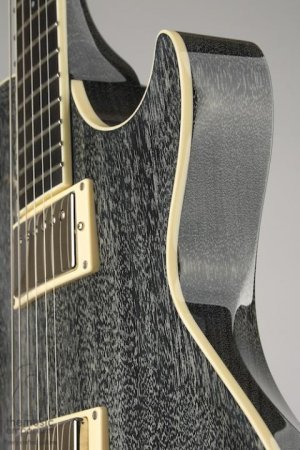St_Genesius
New member
So, first, some context: https://forum.seymourduncan.com/sho...uot-with-Reranch-stuff&highlight=rerproducing
Also, a google image search for "TV Pelham Blue" will show you some of the variations in how this finish can look. Different instruments, different angles, there's some significant variety between any two photos. In particular, notice how in some shots the grain appears lighter than the blue, in others darker.
For the past week and change, I've been testing/practicing on scrap mahogany. I won't bore you with the failed attempts, except only to note that the idea I out forward in the other thread about putting grain filler on TOP of the color does NOT work at all because a) Pelham Blue fills the grain too much on its own to allow the grain filler to really get in there and b) even if you COULD get it in there, the application of it will totally flatten out the metallic particles, thus losing you part of what makes PB special.
So, on to the success! This video show my latest, and closest, attempt to recreate this finish. It's one single coat of color, sprayed VERY dry across 4-5 passes, with only got a couple of thin layers of clear on it -- just enough to lock in the metallic -- as I'm now running very low on non-tinted clear. Based on what I've seen, I think it will take approximately ALL THE CLEAR LACQUER IN THE WORLD to get truly smooth finish on an entire instrument.
TL;DR: just watch the video.
Also, a google image search for "TV Pelham Blue" will show you some of the variations in how this finish can look. Different instruments, different angles, there's some significant variety between any two photos. In particular, notice how in some shots the grain appears lighter than the blue, in others darker.
For the past week and change, I've been testing/practicing on scrap mahogany. I won't bore you with the failed attempts, except only to note that the idea I out forward in the other thread about putting grain filler on TOP of the color does NOT work at all because a) Pelham Blue fills the grain too much on its own to allow the grain filler to really get in there and b) even if you COULD get it in there, the application of it will totally flatten out the metallic particles, thus losing you part of what makes PB special.
So, on to the success! This video show my latest, and closest, attempt to recreate this finish. It's one single coat of color, sprayed VERY dry across 4-5 passes, with only got a couple of thin layers of clear on it -- just enough to lock in the metallic -- as I'm now running very low on non-tinted clear. Based on what I've seen, I think it will take approximately ALL THE CLEAR LACQUER IN THE WORLD to get truly smooth finish on an entire instrument.
TL;DR: just watch the video.




